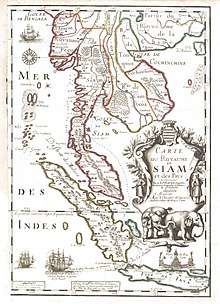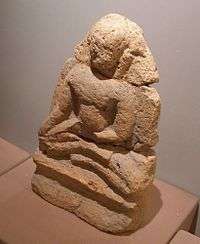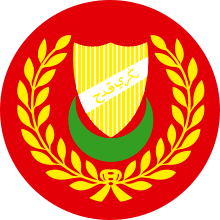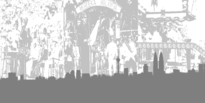Kedah Sultanate
| Sultanate of Kedah كسلطانن قدح Kesultanan Kedah | |||||||||||||||
|---|---|---|---|---|---|---|---|---|---|---|---|---|---|---|---|
|
1136–1941 1945–1946 1948–today | |||||||||||||||
 Kedah in present-day Malaysia | |||||||||||||||
| Status |
Independent (1136-1909) Protectorate of the United Kingdom (1909-1941; 1945-1946) | ||||||||||||||
| Capital | Alor Setar | ||||||||||||||
| Common languages | |||||||||||||||
| Religion | Sunni Islam | ||||||||||||||
| Sultan | |||||||||||||||
• 1136-1179 | Mudzaffar Shah I (first) | ||||||||||||||
• 2017-present | Mahmud Sallehuddin Mu'adzam Shah Current Sultan | ||||||||||||||
| Advisor | |||||||||||||||
• 1909–1915; 1918–1919 | George Maxwell | ||||||||||||||
| Historical era | Early modern period | ||||||||||||||
• Conversion to Islam | 1136 (882 years ago) | ||||||||||||||
| 9 July 1909 | |||||||||||||||
| 16 February 1942 | |||||||||||||||
| 18 October 1943 | |||||||||||||||
• Japanese surrender; returned to United Kingdom | 14 August 1945 | ||||||||||||||
• Added into Malayan Union | 31 March 1946 | ||||||||||||||
| Currency |
Native gold and silver coins Straits dollar (until 1939) Malayan dollar (until 1953) | ||||||||||||||
| |||||||||||||||
| Today part of |
| ||||||||||||||
|
1 Remains as capital until today 2 Malay using Jawi (Arabic) script | |||||||||||||||
Part of a series on the |
|---|
| History of Thailand |
 |
|
Legendary Suvarnabhumi Central Thailand Dvaravati Lavo Supannabhum Northern Thailand Singhanavati Ngoenyang Hariphunchai Southern Thailand Pan Pan Raktamaritika Langkasuka Srivijaya Tambralinga Nakhon Si Thammarat Sultanate of Pattani Kedah Sultanate Satun Reman |
| History |
|
Sukhothai Kingdom Ayutthaya Kingdom Thonburi Kingdom Rattanakosin Kingdom 1932 to 1973 Since 1973 |
|
Regional history |
|
Related topics |
|
|
The Kedah Sultanate is a Muslim dynasty located in the Malay Peninsula. Originally an independent state, it became a British Protectorate in 1909. Its monarchy was abolished after it was added to the Malayan Union but was restored and added to the Malayan Union's successor, the Federation of Malaya.
The information regarding the formation of this sultanate and the history before and after its creation comes from the "Kedah Annals". The Kedah Annals were written in the eighteenth century, over a millennium after the formation of the Kedah Kingdom. It describes the first king of Kedah as arriving on the shores of Kedah as a result of an attack by a mythical gigantic beast. It states that the nation was founded by the offspring of Alexander the Great; who maintained ties with Rome throughout his reign (oddly two centuries after the decline of the Roman Empire due to sacks by the Visigoths and Vandals in 410 and 455).
The Kedah Annals also provide us with very unreliable information regarding the sultans of Kedah. Listing the first sultan of Kedah as Sultan Mudzafar Shah I centuries before the partitioning of the Abbasid Caliphate into distinct sultanates and almost three centuries prior to the contradictory claims of the Terengganu Inscription Stone. This claim also directly contradicts the fact that the Buddhist Srivijaya kingdom was in direct control of Kedah at the time that Sultan Mudzafar Shah I allegedly converted the region to a sultanate.
History


Around 170 CE a group of native refugees of Hindu faith arrived at Kedah, joining them soon were peoples from nearby islands and from the northern Mon-Khmer region. Ancient Kedah covered the areas of Kuala Bahang, Kuala Bara, Kuala Pila and Merpah, and the inhabitants of Kedah appointed Tun Derma Dewa and Tun Perkasa as their village chiefs.
The king from Gemeron
In 630 CE, Maharaja Derbar Raja of Gemeron (now known as Bandar Abbas) in Persia was defeated in battle and escaped to Sri Lanka, and he was later blown off course by a storm to the remote shores of Kuala Sungai Qilah, Kedah. The inhabitants of Kedah found him to be a valiant and intelligent person, and they made him the king of Kedah. In 634 CE, a new kingdom was formed in Kedah consisting of Persian royalty and native Malay of Hindu faith, the capital was Langkasuka.
Conversion to Islam
Based on the account given in Hikayat Merong Mahawangsa (also known as the Kedah Annals), the Sultanate of Kedah started in year 1136 when King Phra Ong Mahawangsa converted to Islam and adopted the name Sultan Mudzafar Shah. However, an Acehnese account gave a date of 1474 for the year of conversion to Islam by the ruler of Kedah. This later date accords with an account in the Malay Annals where a raja of Kedah visited Malacca during the reign of its last sultan seeking the honour of the royal band that marks the sovereignty of a Muslim ruler.[1]
List of rulers
The list of rulers of Kedah as given here is based to some extent on the Kedah Annals beginning with the Hindu ruler Durbar Raja I. According to the Kedah Annals, the 9th Kedah Maharaja Derbar Raja converted to Islam and changed his name to Sultan Muzaffar Shah, thereby started the Kedah Sultanate.[2] The historicity and the dating of the list of rulers however is questionable as Kedah may have remained Hindu-Buddhist until the 15th century when its king converted to Islam.[3]
Hindu era
The following is a list of kings of Kadaram, nine in total. Each used the Hindu title of Sri Paduka Maharaja. The exact dates of each king's reign are not known.
- Durbar Raja I (330–390)
- Diraja Putra (390-440)
- Maha Dewa I (440-465)
- Karna Diraja (465-512)
- Karma (512-580)
- Maha Dewa II (580-620)
- Maha Dewa III (620-660)
- Diraja Putra II (660-712)
- Darma Raja (712-788)
- Maha Jiwa (788-832)
- Karma II (832-880)
- Darma Raja II (880-956)
- Durbar Raja II (956–1136; succeeded as Sultan of Kedah, see below)
- Source for the list of sultans is the Muzium Negeri Kedah, Alor Setar, Malaysia. "The sultans of Kedah".[4]
Islamic era
The beginning of the use of the title sultan in Kedah is attributed to a visit by a Muslim scholar from Yemen, Sheikh Abdullah bin Ja'afar Quamiri, to Durbar Raja II's palace at Bukit Mariam in 1136. The audience resulted in the king's conversion to Islam. He adopted the name "Mudzaffar Shah" and established the sultanate of Kedah, which continues to rule today.[2]
The source for the list of sultans given here is the official genealogy given for the Sultan of Kedah.[5] There are however discrepancies with the Kedah Annals as it lists only 5 sultans from the first convert Mudzaffar Shah to Sulaiman Shah who was captured by Aceh in 1619, in contrast to the twelve listed here. The rest of the list largely follows as that given in the Kedah Annals with the exception of a few changes and more recent updates in the 20th and 21st century.[6]
| Number | Sultan | Reign |
|---|---|---|
| 1 | Mudzaffar Shah I | 1136–1179 |
| 2 | Mu'adzam Shah | 1179–1202 |
| 3 | Muhammad Shah | 1202–1237 |
| 4 | Muzzil Shah | 1237–1280 |
| 5 | Mahmud Shah I | 1280–1321 |
| 6 | Ibrahim Shah | 1321–1373 |
| 7 | Sulaiman Shah I | 1373–1423 |
| 8 | Ataullah Muhammad Shah I | 1423–1473 |
| 9 | Muhammad Jiwa Zainal Adilin Mu'adzam Shah I | 1473–1506 |
| 10 | Mahmud Shah II | 1506–1547 |
| 11 | Mudzaffar Shah III | 1547–1602 |
| 12 | Sulaiman Shah II | 1602–1626 |
| 13 | Rijaluddin Muhammad Shah | 1626–1652 |
| 14 | Muhyiddin Mansur Shah | 1652–1662 |
| 15 | Dziaddin Mukarram Shah I | 1662–1688 |
| 16 | Ataullah Muhammad Shah II | 1688–1698 |
| 17 | Abdullah Mu'adzam Shah | 1698–1706 |
| 18 | Ahmad Tajuddin Halim Shah I | 1706–1710 |
| 19 | Muhammad Jiwa Zainal Adilin Mu'adzam Shah II | 1710–1778 |
| 20 | Abdullah Mukarram Shah | 1778–1797 |
| 21 | Dziaddin Mukarram Shah II | 1797–1803 |
| 22 | Ahmad Tajuddin Halim Shah II | 1803–1821 |
| – | Siamese invasion of Kedah | 1821–1842 |
| (22) | Ahmad Tajuddin Halim Shah II | 1842–1845 |
| 23 | Zainal Rashid Al-Mu'adzam Shah I | 1845–1854 |
| 24 | Ahmad Tajuddin Mukarram Shah | 1854–1879 |
| 25 | Zainal Rashid Mu'adzam Shah II | 1879–1881 |
| 26 | Abdul Hamid Halim Shah ll | 1881–1943 |
| 27 | Badlishah Shah | 1943–1958 |
| 28 | Abdul Halim Mu'adzam Shah | 1958–2017 |
| 29 | Mahmud Sallehuddin Mu'adzam Shah | 2017–present |
Culture
Nobat
The Nobat musical instruments of Nagara and Nepiri were introduced to Kedah by Maharaja Derbar Raja. The instrument is also called semambu. The band is led by the king, and it consists of drums, a gong, a flute and a trumpet. Today, Nobat is a Royal orchestra, played only during royal ceremonies such as inaugurations, weddings, and funerals. The building which houses the instruments and where the ensemble rehearses is known as the Balai Nobat, literally the Office of Nobat, in Alor Setar city proper.
See also
Notes
- ↑ Winstedt, Richard (December 1936). "Notes on the History of Kedah". Journal of the Malayan Branch of the Royal Asiatic Society. 14 (3 (126)): 155&ndash, 189. JSTOR 41559857.
- 1 2 "Kedah: Intro and Background". Go2Travelmalaysia.com. Capslock Sdn Bhd. Retrieved 4 March 2011.
- ↑ "The Development of Kedah's Early History Based on Archeological Finds". MyKedah.
- ↑ "Kedah Genealogy". royalark.net. Retrieved 2018-09-20.
- ↑ Kedah State Public Library (2003). "The genealogy of His Highnesses". Our Sultan. Retrieved 29 August 2010.
- ↑ R. O. Winstedt (December 1938). "The Kedah Annals". Journal of the Malayan Branch of the Royal Asiatic Society. 16 (2 (131)): 31–35. JSTOR 41559921.
References
- Mohammad Isa Othman, Politik Tradisional Kedah 1681–1942, Dewan Bahasa dan Pustaka, Kuala Lumpur, 1990
External links
- List of Kedah sultans
- (in Malay) Nobat
.svg.png)


